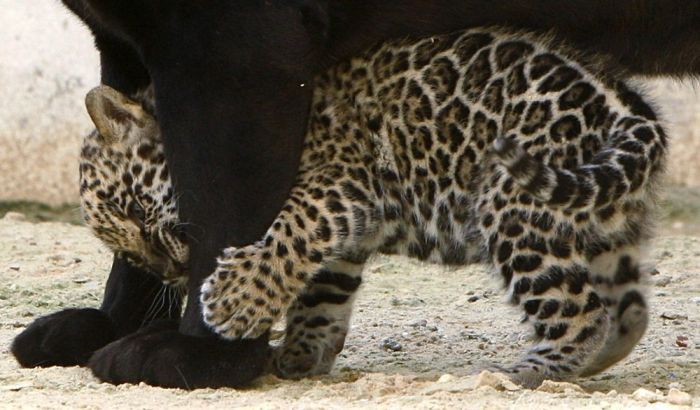|
|
Little Jaguar With Mom
|
The major risks to the jaguar include deforestation across its habitat, increasing competition for food with human beings, poaching, hurricanes in northern parts of its range, and the behavior of ranchers who will often kill the cat where it preys on livestock. When adapted to the prey, the jaguar has been shown to take cattle as a large portion of its diet; while land clearance for grazing is a problem for the species, the jaguar population may have increased when cattle were first introduced to South America, as the animals took advantage of the new prey base. This willingness to take livestock has induced ranch owners to hire full-time jaguar hunters, and the cat is often shot on sight.
The jaguar is regulated as an Appendix I species under CITES: all international trade in jaguars or their parts is prohibited. All hunting of jaguars is prohibited in Argentina, Belize, Colombia, French Guiana, Honduras, Nicaragua, Panama, Paraguay, Suriname, the United States (where it is listed as endangered under the Endangered Species Act), Uruguay and Venezuela. Hunting of jaguars is restricted to "problem animals" in Brazil, Costa Rica, Guatemala, Mexico and Peru, while trophy hunting is still permitted in Bolivia. The species has no legal protection in Ecuador or Guyana.
Current conservation efforts often focus on educating ranch owners and promoting ecotourism. The jaguar is generally defined as an umbrella species – its home range and habitat requirements are sufficiently broad that, if protected, numerous other species of smaller range will also be protected. Umbrella species serve as "mobile links" at the landscape scale, in the jaguar's case through predation. Conservation organizations may thus focus on providing viable, connected habitat for the jaguar, with the knowledge other species will also benefit.
Given the inaccessibility of much of the species' range, particularly the central Amazon, estimating jaguar numbers is difficult. Researchers typically focus on particular bioregions, thus species-wide analysis is scant. In 1991, 600–1,000 (the highest total) were estimated to be living in Belize. A year earlier, 125–180 jaguars were estimated to be living in Mexico's 4,000-km2 (2400-mi2) Calakmul Biosphere Reserve, with another 350 in the state of Chiapas. The adjoining Maya Biosphere Reserve in Guatemala, with an area measuring 15,000 km2 (9,000 mi2), may have 465–550 animals. Work employing GPS telemetry in 2003 and 2004 found densities of only six to seven jaguars per 100 km2 in the critical Pantanal region, compared with 10 to 11 using traditional methods; this suggests the widely used sampling methods may inflate the actual numbers of cats.
|
|









